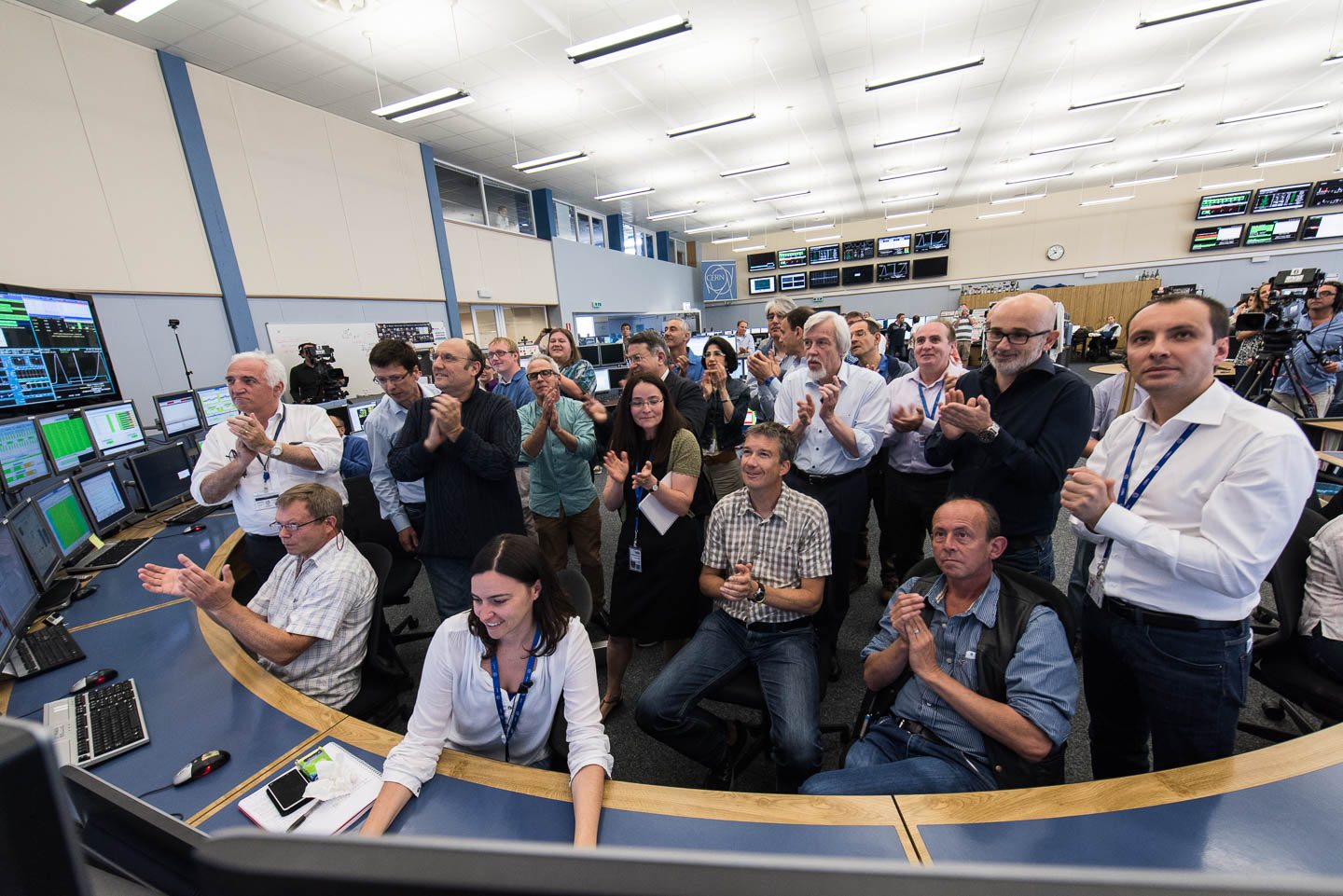Suited, booted and ready for action
After confirming the existence of the Higgs Boson in its first run, the Large Hadron Collider (LHC) is back for season two (think Game of Thrones with less murder, more machines) in an attempt to shed light on the many mysteries of particle physics.
Over the past two years the LHC has been upgraded and repaired. Before the upgrade, the huge 27km particle accelerator underneath the French-Swiss border was operating at energies of around 7 trillion electron-volts. This was more than enough to acquire meaningful data for confirmation of the Higgs Boson and to benefit lots of other research, but now the revamp will allow the pride and joy of European physics to almost double the energy it can channel into each of the proton collisions, meaning even more power for the physicists to play – I mean, work – with.
It was back in April that the first beams of particles were circulated around the accelerator, but we’ve had to wait until last week (Wednesday 3rd June) for the collisions to begin again. Each beam is made up of around 100 trillion particles travelling at 99.9999 per cent of the speed of light – a task CERN has compared to “firing two needles 10 kilometres apart with such precision that they meet halfway.”
It’s great talking about big numbers and bigger magnets, but the real question is: why do we need it, and what could we find? The LHC’s first attempt at delving into the world of the Standard Model (our best theory of what the universe is made of) came up trumps with the Higgs Boson, a prize that seemed to almost complete our understanding of the particles that make up our universe.
Now we’re on the hunt for several things, including magnetic monopoles (predicted by Paul Dirac in 1931), a new branch of particles from an area called Super Symmetry, as well as the thorn in physics’ side, dark matter. The hope is that being able to provide higher energies might help us shed some light on this unknown yet necessary part of the universe – whether it does or not, only time will tell.
People have always had certain fears when it comes to the LHC, so it’s probably best to be plain: no, we aren’t all going to die. The favourite of doomsayers has long been the idea of scientists making a black hole under Switzerland which would quickly grow in size, engulf the planet and us with it.
In reality, however, quantum mechanics would step in, meaning that any black hole created would quickly evaporate out of existence, much to our relief. Furthermore, the Sun gives us higher energy particle collisions every day of the week in the form of cosmic ray scattering in the atmosphere, and last time I checked everything was still functioning normally. In reality, the LHC may be one of the most powerful machines ever built, but it’s surely one of the safest too.
This is an exciting time to be part of particle physics, a time when we’re once again trying to push the boundaries of what we know and are hoping for yet another seismic discovery. The pioneers of our time are once again in the limelight alongside their big machines, and I for one can’t wait to see what they find.

Comments